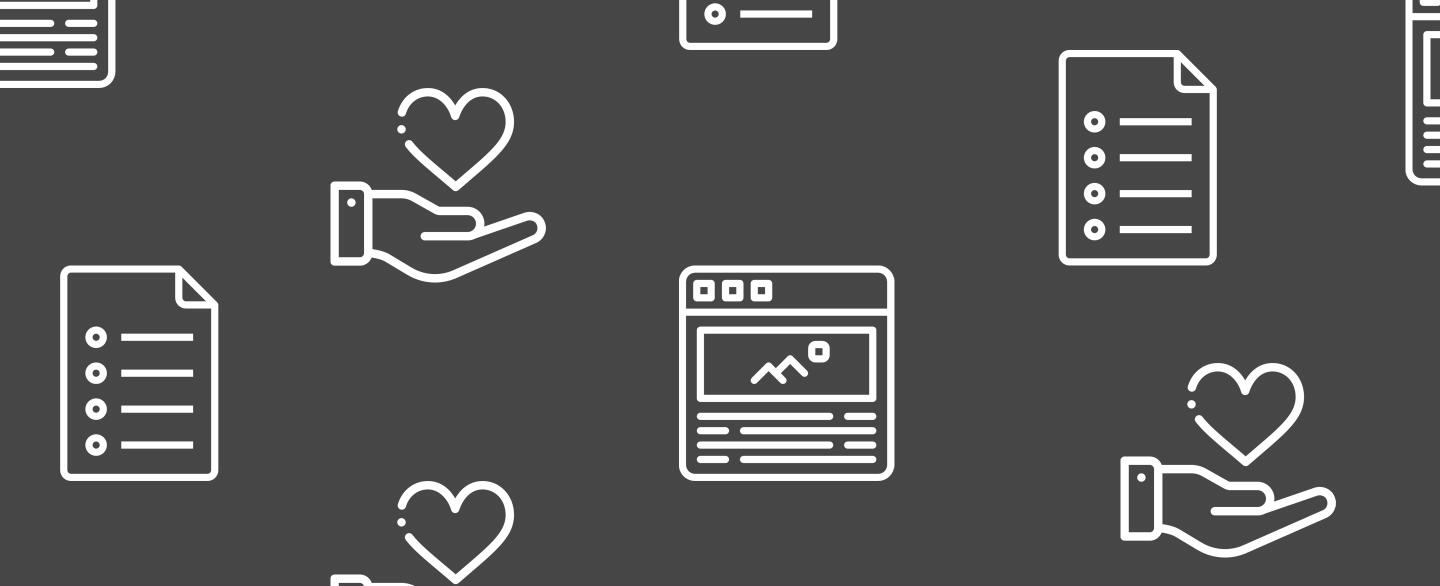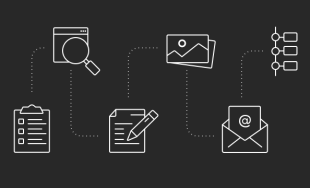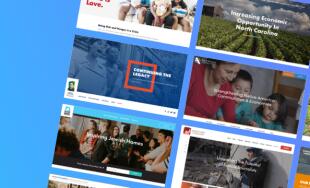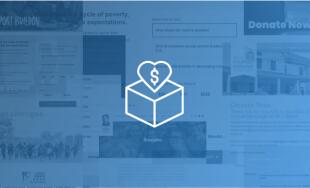This is a companion piece to our previous post, How to Write a Great Website RFP. In this iteration, we address specific considerations for nonprofit RFPs and how they bring about the strongest, most relevant proposals.
Imagine this: you’re a great nonprofit with a lot to offer. Your organization is making a big impact in the field, but your website is seriously outdated. You want a new one, but the prospect of writing a Request for Proposal is daunting. What should you include? What should you leave out? What do web vendors really need to know about your organization?
We get it. RFPs can be overwhelming – especially if you’re unfamiliar with the things that go into a digital project. But luckily for you, we’re here to help.
In this post, we’ll break down RFP needs for a typical nonprofit website design project. We’ll begin with some RFP basics, and then we’ll move on to a list of specific points that a nonprofit website RFP should cover – and why.
RFP Basics
If you’re not already familiar, an RFP is a document that details a project’s requirements and calls for bids from qualified vendors. The RFP explains the scope of the job, budgetary needs, timeline expectations, and anything else that the vendor might need to know to be able to propose the best solution possible.
They’re common practice throughout the business world, and we receive a lot of them from companies looking to refresh or redesign their digital platform. The best website RFPs are clear, detailed, and offer specific information about the company's vision for the new site. In addition to the general points above, website RFPs often include conversion goals, a profile of the target audience(s), essential software integrations, and special tools or functions that the finished website must support. We outline these elements and others in our dedicated blog post, How to Write a Great Website RFP.
Specific Tips for a Nonprofit Web Design RFP Template
Unlike other businesses, nonprofits rely on supporters and donors to keep their projects moving forward. Because of this, their websites often serve the dual purpose of publicizing the organization’s work while giving stakeholders access to things like impact reports, financial documents, and donation platforms.
The wide range of site goals necessitates particular features that nonprofits should consider when writing an RFP. Below we’ll walk through six of these elements and why they’re important. Read them all or skip ahead:
1. Events
Many nonprofits organize events to raise awareness for a cause while driving financial donations. If your organization regularly hosts any type of programming, think about the ways that your website could make those efforts more successful. Do you sell tickets for most functions? Are there caps on the number of people who can attend? Should supporters be able to sign up or reserve a spot online?
Why It’s Important: Including information about your events in your nonprofit RFP is helpful because it can inform the suggestions that your web vendor may include in their proposal. For example, if your vendor knows that you want to sell tickets on your website, they might plan to build an integration with a third-party software like Eventbrite. Or if your existing donor software includes a ticketing tool, your web vendor can plan to shape other features around the program that you’re using already.
2. Donation Vendors
Donating online is quicker and easier than writing a check, so most nonprofits find it helpful to include a donation platform on their website. When writing a nonprofit RFP, think about how you’d like to manage online donations. Do you have a donation vendor already? Are you satisfied with the service? If not, where do you see room for improvement?
If you don’t have a donation vendor already, brainstorm about your ideal online platform. Would you want supporters to be able to set up recurring payments? What are your must-have features? Do you have a budget for the donation tool?
Why It’s Important: When you communicate your donation requirements clearly, your web vendor is able to propose specific solutions that directly address your goals. And the more detail, the better. Your web vendor may know of programs that you’re not familiar with, or they may be able to adapt their own custom donation tools to meet your needs.
3. CRM Software
Nonprofits deal with a lot of different people. To manage them all, it’s common to use a customer relationship management (CRM) software. These programs organize data, streamline conversion processes, and strengthen the relationship between an organization and its individual supporters.
Why It’s Important: As you prepare a nonprofit RFP, mentioning your CRM setup is important because it gives web vendors an idea of what they’re working with. If you’re loving your current program, your vendor can help you to make the most of it through integrations with your new website – think directing all form submissions to Salesforce or automatically adding email addresses to your newsletter list. If you’re unhappy with your current CRM – or if you’re not using one yet – your web partner can help you to find a software that will support your objectives and meet budgetary requirements.
4. Audience
Nonprofits are unique because they must appeal to numerous different audiences at once. Their websites must be able to activate individual donors and volunteers, spark interest from institutional partners, engage potential board members, and draw in a variety of other stakeholders. Each target audience requires different things in terms of software, design, and approach, so it’s valuable to clarify who you’re appealing to in your nonprofit RFP.
Why It’s Important: It goes without saying that your web vendor’s proposal will differ based on who your website is meant to reach. For example, a website primarily directed towards large corporate donors might look more polished and traditional than a digital platform designed to inspire a grassroots volunteer campaign. If you outline target groups in your RFP, your vendor can select features and design elements that are likely to appeal to each one.
Aside from shaping the website’s look and feel, target audiences are important to consider because they often have different conversion goals. You may want a potential volunteer to sign up for a training session, while you’d want donors to go ahead and contribute online. All of this information strengthens your RFP by telling your web partner exactly what the finished website needs to accomplish.
5. Annual Reports
Nonprofits often make annual reports available to supporters online. An organization’s website is generally easy to access, so this makes a lot of sense.
Why It’s Important: Annual reports figure into your RFP in a couple of different ways. First, through their creation. Do you need to create the reports through your website, or do you use another software program? If you do want your site to generate reports, your web vendor will need to know so that they can develop the right plan or tool for the task.
Second, annual reports relate to your RFP because of potential design needs. If your organization is undergoing a logo redesign or a full rebrand, you may want your reports to match your new (or updated) visual identity. By including this information in your nonprofit RFP, your web partner will know to fold a template design into the other creative work that they’re already planning for your nonprofit.
6. Member Login
More than other organizations, nonprofits utilize personal portals that allow supporters to manage their involvement online. By logging in, members can often set up recurring donations, manage event RSVPs, schedule volunteer shifts, and more. These systems require a unique login and password for each user, so they’re a bit more complicated than a standard webpage that’s available to everyone.
Why It’s Important: If your nonprofit wants members to have access to anything that’s password-protected, your web vendor should know up front (i.e. in your RFP!) so that they can shape the cost estimate and timeline accordingly. Additionally, mentioning your site’s members-only section will allow potential partners to begin thinking through designs for the login page and interior interfaces.
Conclusion
RFPs are just like anything else – you’ll get out what you put in. If you provide lots of details about your nonprofit’s needs and expectations, you’re far more likely to receive proposals that are strong, efficient, and specific. Following the tips in this post will certainly put you on the right track.
That’s not to say that there’s anything wrong with being uncertain about what you want in a new website. You may not know what’s possible technologically, or you may be unsure of what features are available within your budget – and that’s okay. If you need to be more general in your RFP, guide your web vendor by offering things like examples of websites that you admire, a budget range that you’d be comfortable with, and capabilities that are important to you. Your partner may have questions down the line, but you’ll get your project off to the right start by being open in your RFP.
Once you’re past the RFP stage, the fun begins! Take the next step by reading our guide on how to get ready for a web design project.
Questions? Comments? Drop us a line or let us know below.





Leave the first comment